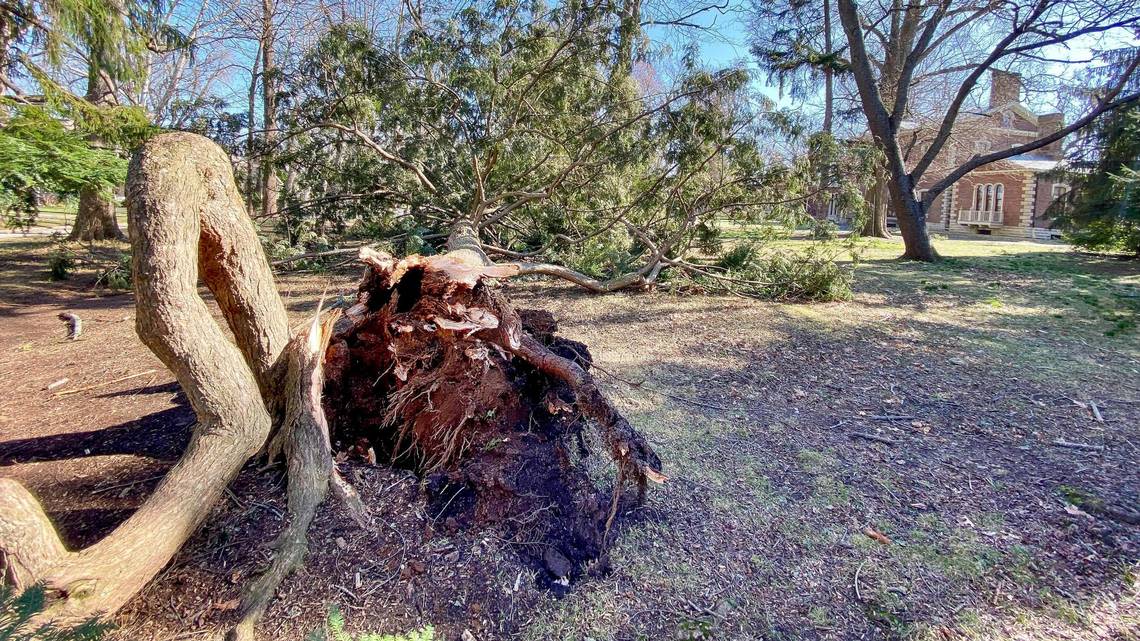Tree cleanup at Henry Clay Estate will cost $20K, plus lost tour revenue, director says
Cleanup efforts at Ashland, the historic Henry Clay Estate in Lexington, were underway Monday after hurricane-force winds blew through Friday, felling at least 15 trees on the property, including some that are centuries old.
“We’re probably going to be shuttered for at least a week,” Henry Clay Estate Executive Director James Clark told the Herald-Leader Monday.
According to Clark, there was no significant damage to the estate’s main structure — the historic mansion that was home to the famous Kentucky statesman for nearly half a century.

The estate’s smokehouse, however, did take some roof damage after it was hit by a fallen tree, Clark said. A separate cottage on the property seems unscathed.
The same can’t be said for more than a dozen trees across the leafy estate. One elm that was at least a century old came down, along with a spruce that was at least 200 years old. Ashland’s ancient blue ash trees — which are 300 years old — only lost a few limbs, Clark said. A few other Kentucky Coffee Trees and some Hackberries were also casualties.
“I would say the clean up of trees alone will be around $20,000,” Clark said, adding the estate lost another $10,000 in revenue from canceled and refunded tours.
Monday morning, a crew of at least seven volunteers was clearing limbs and sorting them into piles ahead of the arrival of a woodchipper, Clark said. Huge limbs were still hanging in surviving trees, so the cleanup effort will be demanding, the director noted.
He advised against visitors coming to look at the damage, given the safety concerns at this time.
The Henry Clay Estate
For Henry Clay, who served as senator, speaker of the house and secretary of state during his life, Ashland was a refuge. In his own words, Clay described it as his own personal “Promised Land” and considered himself more blessed than Moses.
Ashland was also where at least 120 people were enslaved by Clay throughout his life. On Clay’s 600-acre plantation, enslaved men, women and children worked long hours to make every amenity and luxury of Clay’s estate possible. They grew, harvested and processed hemp, raised livestock and cooked and cleaned for the Clays.
An 1845 account posted on the estate’s website describes its various amenities in Clay’s day: “Then there is a stone cheese house and a stone butter-house. Ashland being celebrated for the quantity and quality of butter made there at. His chicken-house, dove-house, stables, barns and sheds are all in perfect repair, spacious, neat, and in order. There is also a large green house filled with choice plants and beautiful flowers.”
Today, the estate’s grounds are home to an arboretum of more than 600 trees, gardens and various historical buildings.
If you would like to support clean-up efforts, the estate takes donations at its website at henryclay.org/donate.
Do you have a question about Lexington for our service journalism team? We’d like to hear from you. Fill out our Know Your Kentucky form or email ask@herald-leader.com.
